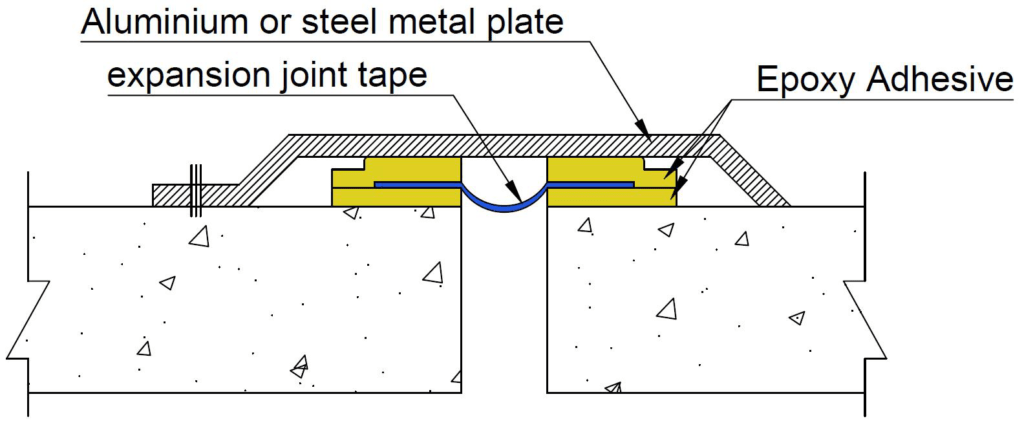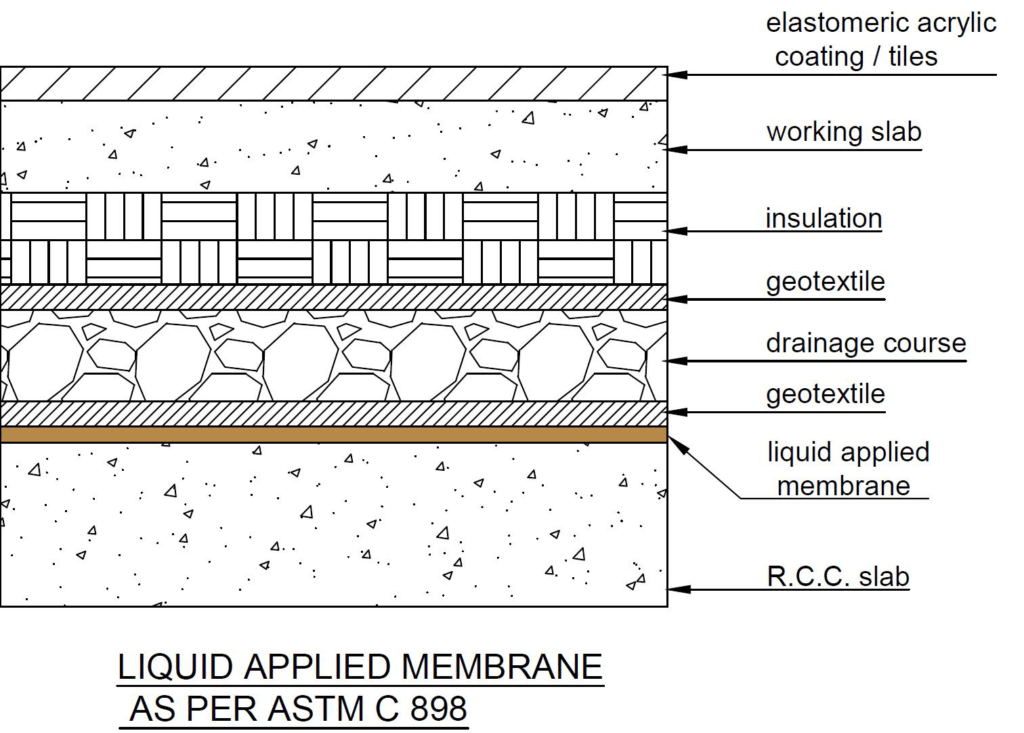Water Proofing of buildings – system design, specifications and challenges
Amongst the current boom in new construction projects, water proofing and controlling water ingress in newly built structures has gained very high importance. Various factors influence water tightness of Concrete structures. Quality of concrete, design efficacy related to water proofing details, ground water management, drainage, maintaining desired slopes, management and design of various joints, use of right construction materials and deploying specific and adequate waterproofing systems are key to leakproof structures. Failure of water proofing results in ingress of water in building areas which then affects the quality of life of the inhabitants as well as performance and life of the concrete structures.
This article discusses some essentials of designing and implementing the water proofing systems for buildings and also looks at possible mitigation measures to arrest and control leakages. Being a short article, it is not possible to cover all systems, materials and specifications but we hope that it gives a good insight about the topic.
Some factors to be considered while designing water proofing systems for new buildings
Residencial and commercial buildings and complexes are constructed in various formats and scales. Its essential to consider the following points while designing the water proofing systems, depending on the type of structure and its size.
Basements
- Water table and direction of flow of ground water if any as well as quality of ground water.
- Geological report showing the settle-ment calculations and stabilization details if required.
- Raft / footings construction details and joints
- Retaining wall construction details, construction joints and understanding confined and unconfined areas.
- Details about rock anchors, piles, pile head treatment.
Roof / Terraces / Open balconies and other open to sky areas
- Details about average rain fall and calculation of catchment area.
- Drainage details and design
- Concrete quality and grade
- Actual usage conditions such as soft scape, pathways, ramps, water bodies, sports etc.
- Construction, control, expansion and seismic joint details.
Typical detail for sealing horizontal seismic movement joints.

Water tanks, swimming pools and other water bodies
- Water head and water quality
- Design details such as size, pipe penetrations and its position related structure.
- Concrete quality and grade
- Crack widths and %age considered during the design of structure.
Internal Wet areas
- Position of wet areas within the building.
- Sunken portions and depth of sunk if any.
- Pipe penetrations, drain and water features
- Details about tiling, fittings and openings such as exhausts, windows etc.
Apart from the above points, its critical to understand and document various exposure conditions, severity of exposure, effect of wind and potential of ingress from other buildings and infrastructure in the vicinity. Some analysis is required to understand if any new construction around the building may potentially change the water table, flow or drainage conditions.
Design of water proofing systems and specifications
Once the above points are considered and the required information is gathered, the systems can be designed by taking in to account the required performance parameters such as ability of the system to withstand the water pressure, drainage capacity, allowed moisture or wetness etc. Although, water proofing systems are supposed to provide moisture or water proof structures, it is not always possible to avoid some ingress. This may be due to very high water table, confinement due to other structures resulting in only negative side being available for waterproofing, poor or inferior construction quality, design flaws such as improper layout of construction joints etc. In such cases, its necessary to agree about the extent of ingress allowed in such buildings and specific areas where leakages, seepages or moisture is expected to be present even after completion of water proofing.

As we know that there are different areas in each building as seen above and each area has different exposure conditions. That also means that they will need to be water proofed as per the exposure and criticality of water tightness. Here, we will discuss few systems and specifications which can be considered while designing the water proofing systems.
ASTM C 898 is a good guide for designing the roof water proofing systems using cold liquid applied water proofing membranes meeting the specification ASTM C 836. The typical design with insulation can be as given below. The standard recommends that the slope shall be provided in the structural slab itself but in Indian conditions, the slope is provide post installation of membrane by the covering screed.
Some typical materials which may be used based on specific conditions are as follows. The typical application method is also given,

Similarly for wet areas, one may consider using AS 3740 and AS/NZS 4858. A typical detail is given below. Although, there are many material options, 2K polymer modified cementitious systems have been used extensively due to their cost /performance benefits for internal wet areas such as baths, showers and toilets.

BS 8102 which is a code of practice for protection of below ground structures against water ingress and is agood guide for designing the water proofing systems for building basements. This code defines three types of systems. Type A – Barrier protection, Tye B- structurally integral protection and Type C- Drained protection. In many cases using a single type of protection does not address the exposure and ingress conditions, which necessitates use of combination of 2 or some times all three types. Treatment of construction joints in raft and retaining walls is critical to ensure water tightness in the long run. Water stops, reinjection hose systems and post injections may be suitably deployed to protect such joints.

Mitigation of leakages due to water proofing failures
Even after providing water proofing, sometimes leakages and seepages are observed in different sections of building such as basement, podiums, through roofs and balconies as well as wet areas. Fortunately there are many investigation methods and instruments which are commercially available for detecting the leakage source. Some work on surface temperature such as thermal cameras and some work on electrical impedance meeting ASTM D 7954. Moisture meters meeting ASTM F2170 are also available. Plumbing leakages may also be tracked by pressurising the lines or by using acoustic amplification devices.
Its important to detect the source of leakage, in order to minimize the breakages and repair area. Once the actual cause, source and extent of leakage or seepage are detected, there may be many options to handle these failures.
Crack injection using cement, PU, epoxy and acrylic based materials are deployed mainly in the basement and sometimes on roofs and podiums. Effectiveness of these injections depend on skill of operators, material selectin and extend of leakages.
Rising dampness may be addressed by inserting impermeable strips at the bottom of the wall or by using gravity injections with Polyoxy aluminium stearate, silanes or siliconates.
Leakages from roof or wet areas need investigation and use of injections, repairing of existing membranes, addressing slope issues, pipe penetration, isolation of wet areas etc.
Controlling and monitoring the installa-tion of water proofing systems
Monitoring and controlling the installa-tion is necessary for ensuring that the systems and its components are applied as per the design and specifications, only approved materials are used, safety standards are followed, materials are tested and workmanship is verified.

Water proofing documentation shall necessarily include the following.
- Design details and schematic or drawings
- Method statements
- Material specifications
- On site quality control specifications
- Sampling and third party test requirements
- Checklists
- Post installation checks and reports
Water proofing is essential for ensuring a hygienic, safe and leakproof buildings. Considering the speed of construction and challenging exposure conditions, there is a need to ensure proper design and implementation of water proofing systems. A fair degree of control and monitoring is required while deploying the water proofing systems. Training of the applicators and related crew is essential as there are many new materials and technologies in this area. The success of water proofing system also depends on coordination and understanding between different trades. If there are conflicts of time lines and sequence, those need to discussed and controlled for the success of the overall project. Although there are many challenges in achieving water tight structures, its possible to minimise and avoid failures with new technology, materials, training, proper design and implementation.

Anudeep Constructive Solutions Pvt Ltd
Web : www.constructionsol.com






